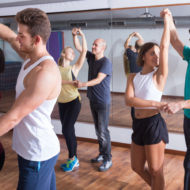My third recommendation is The Creative Habit: Learn It and Use It for Life by Twyla Tharp. It’s marketed as a “how-to book” with 32 practical exercises that anyone can use. “Exercises” sound like work, and heck, you’re on holiday.
So you don’t actually have to do any of the exercises. Instead dip into this book forthe pleasure of reading how a successful artist creates dances. While this is interesting in itself, Tharp’s book incorporates creative practices and quotations from other types of artists and professionals.… Read More


